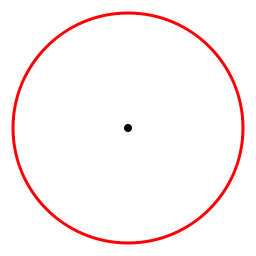You will need
- Depending on the situation you might need to know either the radius or diameter of a circle.
Instruction
1
First and foremost is to understand what data will be manipulated in order to find the length of the circle. For example, given a circle whose radius is equal to R. the radius of the circle (the circle) is a segment that unites the center of the circle (the circle) with any of the points of the circle. If given a circle whose radius is unknown, then the problem will be referred to is not the radius but the diameter of this circle, which is conventionally equal to D. In this case, it is worth remembering that the radius length equal to half the length of the diameter. Diameter is a segment that connects any two opposite points together of the circumference, which restricts the plane, forming the circle, while the segment passes through the center of this circle.
2
Having dealt with the source task data, you can use one of two formulas for finding the circumference of a circle/circle:
C = π*D, where D is the diameter of this circle;
C = 2*π*R, where R is the radius.
C = π*D, where D is the diameter of this circle;
C = 2*π*R, where R is the radius.
3
You can consider the examples.
Example 1: Given a circle whose diameter is 20 cm, it is required to find its length. To solve this problem you will need to use one of the formulas mentioned above:
C = 3.14*20 = 62.8 cm
Answer: the length of this circle is 62.8 cm
Example 2: Given a circle whose radius is 10 cm, is required to compute its length. Assuming that the radius of the circle is known, you can use the second formula:
C = 2*3.14*10 = 62.8 cm
The answers are the same, because the radii of the circles given in the examples are equal.
Example 1: Given a circle whose diameter is 20 cm, it is required to find its length. To solve this problem you will need to use one of the formulas mentioned above:
C = 3.14*20 = 62.8 cm
Answer: the length of this circle is 62.8 cm
Example 2: Given a circle whose radius is 10 cm, is required to compute its length. Assuming that the radius of the circle is known, you can use the second formula:
C = 2*3.14*10 = 62.8 cm
The answers are the same, because the radii of the circles given in the examples are equal.
Note
PI is a constant value which is equal to 3.14. This constant is not rounded in that case, if you require high accuracy calculations. This is important in architecture, mechanics, physical computing, and many other areas. Then π = 3.1415926535

